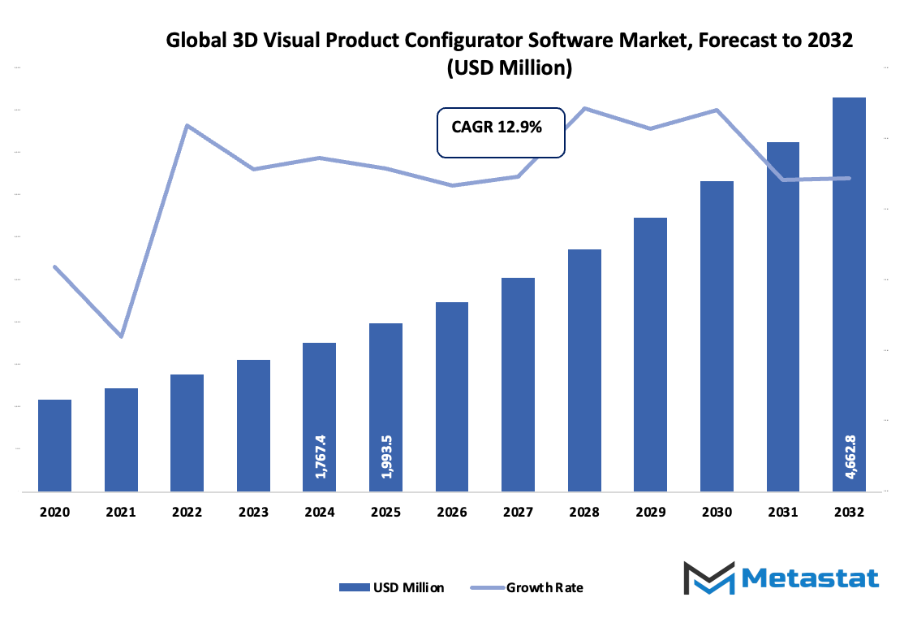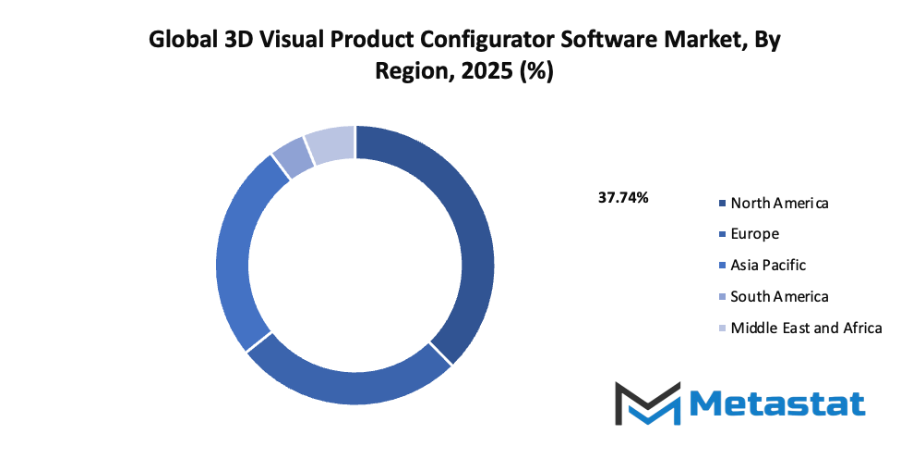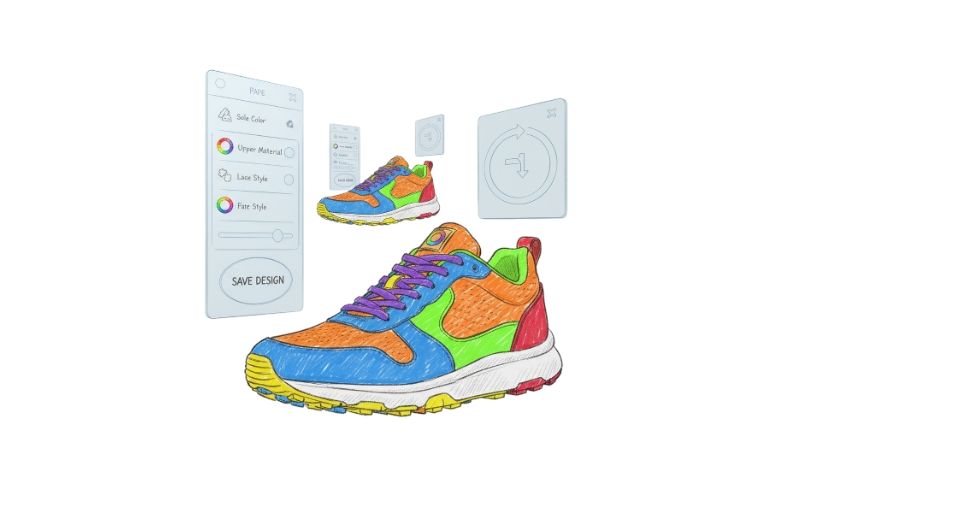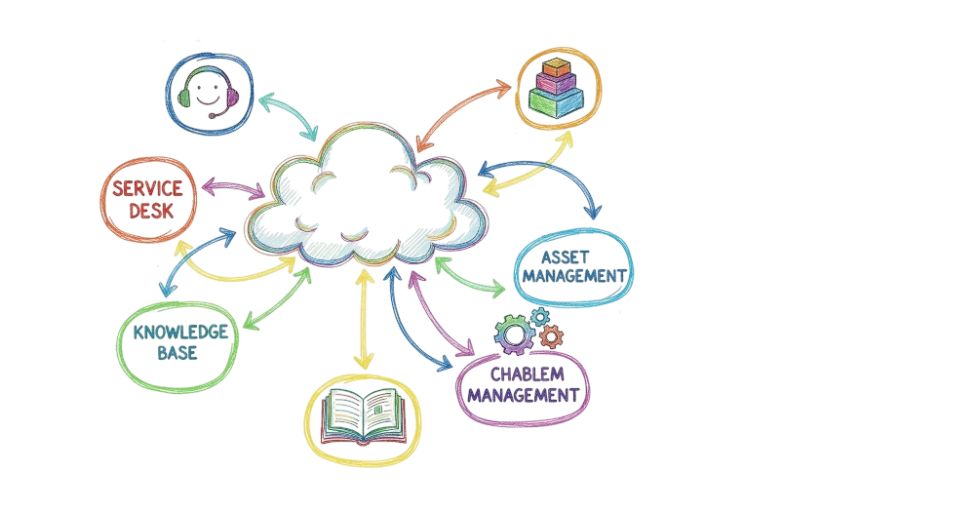Global 3D Visual Product Configurator Software Market - Comprehensive Data-Driven Market Analysis & Strategic Outlook
The global 3D visual product configurator software market continues to revolutionize business and customer interactions with products. It had already started in the early 2000s when companies began to test simple online product customization tools where customers could modify colors, materials, or small product features. Early adoption wasn't rapid, considering that inadequate computing power and bandwidth limitations maintained the level of real-time visualisation as primitive in its advancement. Better 3D rendering engines in about 2010 brought a tipping point, with interaction being smoother and product previews more realistic. These early innovators in furniture, automotive, and fashion spaces began using these tools towards the end of this era to differentiate themselves from their competitors and provide more personalized experience.
- Global 3D visual product configurator software market size of around USD 1993.5 million in the year 2025, at a CAGR of around 12.9% during the period 2032, with an opportunity to reach beyond USD 4662.8 million.
- On-Premises accounting for as much as almost 38.4% market share, leading to innovations and increased applications through in-depth research.
- Key drivers of growth: Rising need for customized and customized products across sectors, including autos, furniture, and apparel., E-commerce and internet-based shopping platform growth, fueling demand for visual product customization software to increase customer engagement and conversion rates.
- Opportunities: Blending augmented reality (AR) and virtual reality (VR) technologies to enhance interactive and immersive capabilities of 3D visual product configurator software.
- Key takeaway: The industry will grow exponentially in worth in the next ten years, portending gigantic growth prospects.

Users will anticipate not only visual adjustment but also an understanding of how alterations affect functionality or compatibility. For example, in the automotive industry, users will have to see interior configurations, finish textures, and even dynamic characteristics before purchasing. This changing expectation will propel software developers to include functionalities like augmented reality, virtual reality, and recommendations based on AI, leading to richer experiences. Upgrades in graphics processing and cloud computing hardware would have increased the uptake of these configurator platforms even more. Extremely intricate 3D models would become simple to visualize using cloud-based solutions without investing in high-end hardware, becoming more accessible to end-users and organizations. The mobile graphics gains would also enable users to graphically display detailed 3D models directly from smartphone or tablet, with improved availability compared to normal desktop environments. Regulations changes in digital business and data protection will also further contribute their role in shaping the market. As more and more companies reap and work with user-specified customization information, submission to privacy and security legislation will be a fundamental aspect of software designing.
From humble origins as early customization software to its eventual role as highly interactive, immersive environments, the international 3d visual product configurator software market will keep redefining how customers interact with products, setting new standards for interactivity, customization, and accessibility across all industries
Market Segments
The global 3D visual product configurator software market is mainly classified based on Deployment Model, End-User Industry.
By Deployment Model is further segmented into:
- On-Premises: The on-premises deployment model will be most sought after by industries that need absolute control over data security and customization. Locally installed systems will be preferred by organizations for preserving confidential sensitive product designs. This model will deliver stability and manual handling of software updates, hence ideal for large enterprises with dedicated IT teams.
- Cloud-Based: Cloud-based will expand at a faster rate because of the scalability and ease. Organizations will use cloud deployment to decrease infrastructure expenses and enable teams to work remotely in real-time. Cloud-based will offer ongoing innovation, as new features and upgrades will be easily accessible at their fingertips, with organizations being able to react quickly to consumer requirements.
By End-User Industry the market is divided into:
- Automotive: The motor vehicle sector will more and more employ global 3D visual product configurator software market to provide customers with customized car designs. This technology will reduce design errors, shorten production timelines, and enhance customer satisfaction through computerized customization loops. It will also assist in better visualization of intricate components prior to production.
- Furniture: Furniture companies will use this software to enable customers to view furniture and interior designs. The software will enable companies to provide immersive experiences in which customers can modify material, color, and size in real time. It will enhance confidence in buying, minimize returns, and enable effective supply chain planning.
- Fashion & Apparel: Fashion and apparel will experience the software offering virtual try-on as well as product customization. It will be utilized by fashion companies to reproduce copies of garments and accessories digitally and allow customers to change colors, prints, and sizes. The method will increase consumer engagement, avoid overproduction, and facilitate sustainable methods in the business.
- Electronics: Electronics firms will apply the software to show product variations and configurations prior to their production. Customers will be able to choose features, colors, and technical parameters in a simulated environment and hence be satisfied with the ultimate form of the product. The software will also automate prototyping further and accelerate time-to-market for new electronics designs.
- Home Improvement: Home improvement companies will employ this application to visualize home remodeling and interior design projects. Clients will work with virtual 3D images of their homes, enabling them to efficiently plan renovations. The software will enable them to make better decisions, eliminate mistakes, and develop customized solutions for various home remodeling needs.
- Industrial Machinery: The industrial machinery industry will gain from the software by creating detailed machinery configurations and set-ups. Equipment will be set up virtually for various manufacturing processes. This will minimize production risk, enhance machine efficiency, and provide precise delivery of customized machinery solutions to customers.
- Healthcare & Medical Devices: Manufacturers of healthcare and medical devices will utilize the software to configure the devices as per specific patient or hospital needs. It will improve accuracy, allow training via virtual modeling, and minimize risk of injury to patients. The technology will also speed up design and development of customized medical solutions.
- Others: Other industries such as consumer products and education will explore this software to create interactive and customized experiences. Companies will utilize it to interact with customers, improve manufacturing, and create new products. It will give a competitive advantage with the ability to visualize several configurations simultaneously before designing.
|
Forecast Period |
2025-2032 |
|
Market Size in 2025 |
$1993.5 Million |
|
Market Size by 2032 |
$4662.8 Million |
|
Growth Rate from 2025 to 2032 |
12.9% |
|
Base Year |
2024 |
|
Regions Covered |
North America, Europe, Asia-Pacific, South America, Middle East & Africa |
By Region:
- Based on geography, the global 3D visual product configurator software market is divided into North America, Europe, Asia-Pacific, South America, and the Middle East & Africa.
- North America is further divided into the U.S., Canada, and Mexico, whereas Europe consists of the UK, Germany, France, Italy, and the Rest of Europe.
- Asia-Pacific is segmented into India, China, Japan, South Korea, and the Rest of Asia-Pacific.
- The South America region includes Brazil, Argentina, and the Rest of South America, while the Middle East & Africa is categorized into GCC Countries, Egypt, South Africa, and the Rest of the Middle East & Africa.

Growth Drivers
- Increasing demand for personalized and customizable products in various industries, such as automotive, furniture, and fashion: Increasing demand for personalized and customizable products in industries such as automotive, furniture, and fashion will continue to drive the global 3D visual product configurator software market. Customers increasingly expect products that match their preferences, and businesses will invest in software that allows for seamless customization and visualization.
- Growth of e-commerce and online retail platforms: Expansion of e-commerce and online retail will boost the global 3D visual product configurator software market, as businesses seek visual product customization tools to engage customers effectively. These solutions will help improve conversion rates and provide a more interactive shopping experience, meeting rising consumer expectations for online purchasing.
Challenges and Opportunities
- Complexity and cost: Implementing and integrating 3D visual product configurator software with existing enterprise systems can be complex and expensive. High initial investment and technical expertise requirements may slow adoption, creating a need for solutions that are easier to integrate while still delivering the full capabilities of the software.
- Limited adoption and awareness among businesses: Small and medium-sized enterprises (SMEs) often show limited adoption of 3D visual product configurator software due to perceived technical difficulties and resource limitations. Overcoming this barrier will be essential for the global 3D visual product configurator software market to expand, particularly as more affordable and user-friendly options emerge.
Opportunities
- Integration of AR and VR technologies: The integration of augmented reality (AR) and virtual reality (VR) will enhance the immersive and interactive capabilities of 3D visual product configurator software. Businesses will leverage these technologies to offer a more realistic and engaging product experience, which will drive market growth and set new standards for customer interaction.
Competitive Landscape & Strategic Insights
The global 3D visual product configurator software market will witness significant transformation as competition intensifies among both established international leaders and emerging regional players. Companies such as Autodesk, Inc., Axonom, Dassault Systèmes SE, KBMax, SAP SE, Tacton Systems AB, Threekit, Zoey, Inc., CDS Visual, ZeroLight Ltd., Atlatl Software, Zakeke Interactive Product Designer, Unity, Configit, Infor, Marxent, ACATEC Software, and ShapeDiver are shaping the competitive landscape with innovative strategies, expanding capabilities, and increasing investment in research and development. These competitors are expected to push the boundaries of product customization, visualization, and user experience, creating a market environment where differentiation through technology and customer-centric solutions will become critical.
Future growth in the market will be influenced by the integration of advanced technologies, including artificial intelligence, augmented reality, and cloud-based solutions. These innovations will allow companies to offer more immersive and interactive configurator experiences, giving businesses the ability to tailor offerings to specific customer needs while maintaining operational efficiency. Strategic insights will be essential for success, as companies that can anticipate shifts in demand, leverage emerging tools, and maintain flexible platforms will likely outperform peers.
Regional competitors will continue to challenge traditional market leaders by adopting agile development approaches and targeting niche segments with specialized offerings. This will increase the need for continuous monitoring of market trends, competitor moves, and customer preferences. Partnerships and collaborations will become increasingly important, enabling players to enhance their technical capabilities and broaden market reach. In the coming years, the competitive landscape will not only reflect who can deliver the most advanced software but also who can adapt fastest to evolving market dynamics, technological progress, and changing customer expectations.
Market size is forecast to rise from USD 1993.5 million in 2025 to over USD 4662.8 million by 2032. 3D Visual Product Configurator Software will maintain dominance but face growing competition from emerging formats.
The market will favour companies that combine innovation with strategic foresight, ensuring they remain relevant in an environment where rapid technological changes and growing consumer demand for personalized experiences define success. Businesses that integrate these approaches will set the standard for the next generation of 3D Visual Product Configurator Software, driving the industry forward while creating opportunities for both established and emerging competitors
Report Coverage
This research report categorizes the global 3D visual product configurator software market based on various segments and regions, forecasts revenue growth, and analyzes trends in each submarket. The report analyses the key growth drivers, opportunities, and challenges influencing the global 3D visual product configurator software market. Recent market developments and competitive strategies such as expansion, type launch, development, partnership, merger, and acquisition have been included to draw the competitive landscape in the market. The report strategically identifies and profiles the key market players and analyses their core competencies in each sub-segment of the global 3D visual product configurator software market.
3D Visual Product Configurator Software Market Key Segments:
By Deployment Model
- On-Premises
- Cloud-Based
By End-User Industry
- Automotive
- Furniture
- Fashion & Apparel
- Electronics
- Home Improvement
- Industrial Machinery
- Healthcare & Medical Devices
- Others
Key Global 3D Visual Product Configurator Software Industry Players
- Autodesk, Inc.
- Axonom
- Dassault Systèmes SE
- KBMax
- SAP SE
- Tacton Systems AB
- Threekit
- Zoey, Inc.
- CDS Visual
- ZeroLight Ltd.
- Atlatl Software
- Zakeke Interactive Product Designer
- Unity
- Configit
- Infor
- Marxent
- ACATEC Software
- ShapeDiver
WHAT REPORT PROVIDES
- Full in-depth analysis of the parent Industry
- Important changes in market and its dynamics
- Segmentation details of the market
- Former, on-going, and projected market analysis in terms of volume and value
- Assessment of niche industry developments
- Market share analysis
- Key strategies of major players
- Emerging segments and regional growth potential








 US: +1 3023308252
US: +1 3023308252






